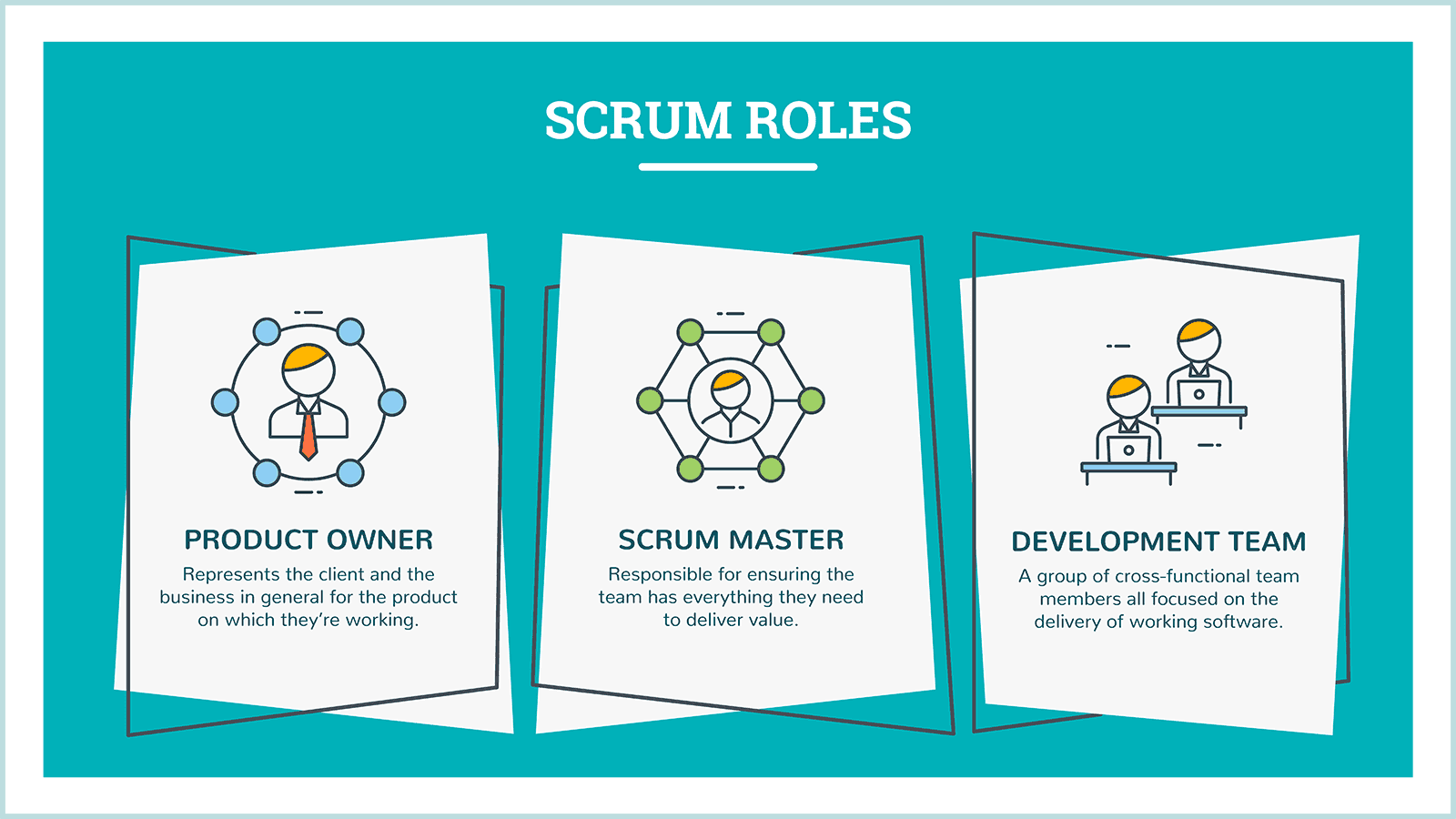Have you ever felt that your productive time is wasted in never-ending meetings at work?
Well, statistics show that an average worker spends 21% of their time in meetings. And what is even worse is that they feel 25% of that precious time is wasted!
Meetings are a vital way of communication for the teams about progress made in the project. Moreover, they help maintain motivation to achieve the end goals. However, regular meetings might become too lengthy or irrelevant and drain the energy out of an employee, leaving them demotivated to continue the day’s work.
Agile meetings were introduced as a better approach to solving this inefficiency of conventional meeting setups. When they are planned and executed well, agile meetings don’t waste the team’s time and improve the efficiency and overall effectiveness of the team.
In this article, we discuss agile methodology and how agile meetings succeed at improving the meeting environment.
Table of Contents
What Is Agile Methodology?
An agile methodology is an approach founded in the year 2000 that emphasizes four core values:
- Individuals and interactions over processes and tools
- Working software over comprehensive documentation
- Customer collaboration over contract negotiation
- Responding to change over following a plan
It is an iterative and incremental approach in which the project work cycle is broken down into short sets of intervals known as sprints, which usually range between one to four weeks. The agile team plans and executes the work for a specific set of breaks, and then evaluates their outputs and processes at the end of each sprint cycle.

This enables a short and quick feedback loop that helps the agile team to adapt to any required changes, focus on quality, and deliver value to their customers quickly and more efficiently.
Though there are many frameworks within the agile methodology, the scrum framework is the most commonly used one.
Here we will be discussing agile meetings with respect to the scrum framework.
So, now to the big question: What are agile meetings?
Read also: Professional Goal Examples To Build A Dream Career
What are Agile Meetings?
Agile meetings are meetings held in an agile approach, to facilitate continuous collaboration in an agile team.
Unlike conventional meetings where you might have a lengthy agenda, numerous objectives, and a long list of topics to discuss, agile meetings are highly focused on a specific topic to be addressed in the meeting agenda.
Each agile meeting would be focusing on either of the two goals that need to be accomplished at the end of the meeting:
- To review performance in the previous sprint
- To plan for the next sprint.
The objective behind setting up agile meetings is to minimize how often the team goes on and off discussions that don’t pertain to the task at hand. It ensures that the entire team is on the same page and that the work progress is on track to achieve the end goal of the project.
Read also: Who is a Manager? Roles and Responsibilities Defined
Who Should Attend the Agile Meetings?
Agile meetings ensure that it respects employees’ time by inviting only the necessary attendees to the respective meetings. This also helps to avoid extraneous conversations and to keep the meeting discussions concise and effective.

In agile scrum meetings, generally, the attendees are as below:
Development team
The development team consists of employees who create products or provide services in an organization.
They are the ones who are actually working on the product or service and will be the most acquainted with it. Furthermore, they can offer valuable insights into how successfully the project is progressing, and can also receive suggestions on how to proceed further.
Scrum master
The Scrum master is a meeting leader with expert knowledge of the Scrum framework.
He ensures that everyone abides by scrum protocols, and ensures better team interactions. He also sets up meetings, communicates progress, and offers guidance.
Product owner
The product owner is accountable for the finished product and oversees the output of the scrum team.
In agile meetings, product owners can receive progress updates from their team and provide suggestions or instructions on how to proceed further.
They prioritize items to be worked on before every sprint and collaborate with the scrum team for developing strategies to work on the product effectively.
The Challenger Sales Model: A 5-Min Guide to Close More Deals
What Are the Different Types of Agile Meetings?
There are different types of agile meetings, but here are the four primary types according to the Scrum methodology: Sprint Planning, Daily Standups, Sprint Reviews, and Sprint Retrospective Meetings.
Let’s dive in to see what each one is!
1. Sprint planning meetings
As the name suggests, a Sprint Planning Meeting occurs at the beginning of a sprint and involves the entire team to plan for the upcoming sprint.
Meeting goal
The goal of the meeting is to identify the items that need to be covered in the course of the sprint, and prioritize the work accordingly.
Once the sprint goals are determined, the tasks to be completed are distributed to the team members.
Attendees
The product owner, development team, and scrum master are the typical attendees of a sprint planning meeting.
Agenda template
- Celebrate the achievements in the last sprint, and discuss what wasn’t completed.
- Discuss the sprint goal, and the deliverables to be accomplished in this sprint.
- Check on scrum team availability during the sprint, and discuss necessary adjustments.
- Divide tasks and responsibilities to the scrum team.
Meeting length and frequency
It is recommended that sprint planning meetings should be no longer than two times the length of the sprint. That is, if a sprint consists of two weeks, the sprint planning meeting should be ideally no more than four hours.
The frequency of the sprint planning meeting will be ideally once per sprint cycle, as the ultimate aim is to plan for the entire sprint.
Benefits
- Enables the team to agree on sprint goals and commit to the work that needs to be completed.
- Creates a platform to discuss the expectations of the product owner clearly, and identify team capacity and bandwidth to achieve the sprint goal.
2. Daily standups / daily scrum meeting
Daily scrum meeting, also known as daily standup is a quick daily sync-up with your team. It allows the scrum team to update their progress, and to determine if work is going in the right direction.
It is expected to be very short, so the participants are expected to stand during the course of the meeting, hence the name daily standup meeting.

Meeting goal
On each day of the sprint, a daily scrum meeting is held to check on the previous day’s work, uncover any roadblocks, and commit to the work that needs to be accomplished that day.
This meeting is not meant to serve as a problem-solving or issue-resolution meeting. Instead, it is to give the entire team an understanding of what items are completed, and what are to be dealt with for the day. Any issues that are raised in the scrum meeting are addressed offline by the concerned people.
Attendees
The daily scrum meeting is to be attended by the developer team and scrum master. The scrum master ensures that the development team conforms to the goal of the meeting, and ensures the smooth flow of the meeting.
Agenda template
- What did you accomplish yesterday?
- What is on your to-do list for today?
- Is there anything blocking your work?
- How close are we to hitting our sprint goals?
Meeting length and frequency
Daily standup meetings are strictly time-boxed to fifteen minutes to ensure that meetings are brisk and relevant to their purpose. This meeting is ideally scheduled daily in the mornings to kickstart the tasks for the day. They are typically held in the same location and at the same time each day.
Benefits
- Enables the team to sync up on the status of task progress.
- Make sure that the scrum team is on the same page regarding the tasks to be accomplished.
- Provides a platform to review and correct anything within a short feedback loop, without waiting for too long.
- Helps team members to identify any roadblocks, and to work on solving them.
- Promotes self-organization and collaboration among team members, as they become accountable to each other.
Read also: A Productive Sales Meeting in 30 Minutes? Here’s How!
3. Sprint review meeting
The sprint review meeting provides an opportunity for the team to showcase the work that they accomplished during the sprint cycle.
During sprint review, the development team presents the work that was done during the sprint, often with a demonstration to the product owner and other stakeholders.

Meeting goal
A Sprint Review meeting is held with the goal of presenting and reviewing the work done by each of the scrum team members during the sprint cycle. It provides a platform to celebrate their accomplishments, and for giving and receiving feedback on the work.
Attendees
The development team, scrum master, product owner, and all relevant stakeholders are to be present in the sprint review meeting.
Sprint Review meetings can be formal or casual depending on the project scenario. It might be an informal internal presentation within the team or a formal demonstration to the stakeholders.
Agenda template
The presentation will include the answers to the below questions.
- What items have been completed?
- What obstacles have been fixed?
- What exciting accomplishments have been made?
The product owner and stakeholders will review the presentation and provide feedback and suggestions on the tasks accomplished so far.
Meeting length and frequency
The sprint review meetings are held at the end of the sprint cycle. The length of the meeting would be one to two hours for every week of the sprint. That is, if the sprint cycle was two weeks long, the sprint review should be ideally two hours, and should not go over four hours.
Benefits
- Provides a platform for stakeholder engagement.
- Early and frequent reviews and feedback enable us to make necessary changes without much hassle.
- Builds better relationships with customers.
- Ensures the best quality of the end product with frequent reviews and corrections.
Read also: The Right Way Of Saying ‘Sorry for the Inconvenience’
4. Sprint retrospective meeting
A sprint retrospective meeting comes at the end of each sprint. This meeting brings the entire scrum team together to discuss the processes in the just concluded sprint and determines any changes required to improve the next sprint cycle.
Meeting goal
The sprint retrospective meeting is an excellent platform for the scrum team to retrospect on their performance in the previous sprint cycle. It is all about identifying what went well, and what didn’t throughout the sprint.
This meeting reveals some key insights that would help the scrum team to improve their performance in the next sprint.
Attendees
The development team, scrum master, and product owner (optional) attend the sprint retrospective meeting.
Agenda template
The scrum team members address the below main points throughout the sprint retrospective discussion:
- What went well during the sprint cycle?
- What went wrong during the sprint cycle?
- What could be done differently to improve the next sprint cycle?
- Which methods or processes should we eliminate and which should we keep?
- Which methods should we adjust for the next sprint?
Meeting length and frequency
The sprint retrospective meeting is to be held at the end of the sprint cycle. The duration of the meeting depends on the length of the sprint cycle. Ideally, it should be one hour per week length of the sprint. That is, the sprint retrospective should last two hours for a two-week sprint.
Benefits
- Enables the scrum team to reflect on and retrospect their past performance.
- Helps in collectively finding ways to improve productivity and performance.
- Ensures that the scrum team continuously improves and evolves to meet the dynamic needs of the project.
- Builds a sense of belonging and self-management within the team members.
Read also: The Importance of Project Milestones (+ Examples)
Why Do You Need Agile Meetings?
1. Quick and focused meetings
Employees’ energy might get drained in a day full of unnecessary meetings, as the famous phrase goes ‘this meeting should have been a mail!’. Whereas the quick and focused meeting setup in agile meetings wastes no one’s time and will help the scrum team to emphasize the tasks to be accomplished.
2. Productive team discussions
Agile meetings are held with only the necessary team members so that there is time to address everyone individually and to keep the discussions meaningful and productive. It also helps each team member to ensure that their work is aligned with the overall project goals.
3. Higher productivity
By dividing the entire project work into small actionable tasks, the agile methodology helps the scrum team to focus on accomplishing the tasks one at a time, to reach the project goal. This ensures that the team members don’t have any backlog to worry about.
4. Higher flexibility
Agile methodology allows the scrum team to review the processes and update them if required, based on the demands of the project. This provides greater flexibility to the workflow.
5. Better quality products
The incremental and detail-oriented review at each stage of the sprint ensures that the end product is up to the standards.
6. Reduced project costs
A large project would take a lot of time and effort if it were to be started over from scratch due to some big mistake by the team.
Agile methodology’s incremental approach is a boon in this aspect as it breaks the project into sprints. It provides a chance to review and correct mistakes in the current sprint alone.
So, it doesn’t affect any work accomplished in the previous sprint.
This will reduce the overall costs of the project.
7. Better customer relations
Agile meetings include the product owner as and when required so that their expectations on the end product are clearly communicated with the scrum team.
This, in turn, helps them give suggestions or instructions resulting in better customer satisfaction.
All of this helps to retain clients and to increase the business revenue.
8. Team building
Agile meetings not only keep your team members informed of daily operations but also allow them to collaborate with each other and thus aids in team building.
9. Improved employee morale
The agile methodology doesn’t restrict the team members to the organizational hierarchy.
Instead, Agile meetings provide a platform for each of the team members to present their points and opinions.
This in turn makes them feel valued and empowered so that they are motivated to perform even better for the benefit of the project.
25 Productive Things To Do Instead Of Watching Netflix
How to Manage Agile Meetings Effectively?
So far, we have seen what agile meetings are, what different types of meetings exist, and why we need agile meetings.
Now, here are a few helpful tips that you need to know to host agile meetings effectively.
1. Stay focused on the meeting goal
What sets agile meetings unique is that they are concise and focused.
It is important to stick to the meeting purpose and agenda and limit extraneous conversations to avoid taking the discussion out of context. For example, your daily standup meeting should neither be a platform for detailed issue resolution, nor it should turn into a sprint review meeting.
2. Timebox the meetings strictly
All the agile meetings should be strictly time-boxed, and should not go overboard on the scheduled time. If the meetings exceed the time limit, it doesn’t serve the very aspect of agile methodology to enable the scrum team to use their time productively.
3. Use the right meeting tools
Choosing the right meeting tools can make a huge difference to the meeting setup.
Good project management software will make the planning and execution of agile meetings seem like a piece of cake.
It will not only aid in conducting the meeting well, but also help in the post-meeting works like distributing meeting notes, turning relevant information from meeting into new tasks, and assigning action items to respective owners.
4. Plan the meeting around your team
It is necessary to have a meeting schedule to maintain the discipline of workflow and not interrupt anyone’s valuable work time.
However, it is also important to give priority to the team members’ schedules while setting up these meetings.
It is less about strict rules and more about maximizing the productivity of the team. So be considerate and check with your scrum team while scheduling the scrum meetings, especially the daily standups.
5. Come prepared to the meeting
Everyone from the development team and scrum master to the product owner, who needs to attend the agile meeting should come prepared to the meeting according to the respective meeting agenda.
No prior preparation may lead to confusion and lags in the meeting, wasting everyone’s work time.
The scrum team should be aware of the questions to expect, keep their work demos ready to be presented, and be ready to discuss strategy and action plans.
6. Collaborate with your team
A one-man-led show won’t go quite long in agile methodology.
Good collaboration within the scrum team is the backbone of its success. The scrum master should ensure that all the team members are given a chance to speak up and register their updates and opinions.
Each team member should be ready to contribute and collaborate with their team to improve efficiency and ultimately their output.
7. Review and offer feedback frequently
It is essential to continue checking on sprint progress at scheduled intervals to update the workflow as required, without affecting the sprint cycle too much.
The scrum team members should offer constructive criticism, without channeling the blame toward any one of the team members for the bottlenecks in the workflow.
10 Great Organization Tools [And How You Can Use Them]
Conclusion
Agile meetings certainly provide a defined structure to the meeting setup and enhance collaboration within the scrum team.
Statistics reveal that organizations following an agile approach in their meetings and processes have reported 76% improvement in productivity and 83% fast delivery to customers.
Also, keep in mind there is no hard and fast rule to conduct meetings the right way.
Every team is different, and there is no perfect process. It is all about tweaking the strategies to best suit the demands of your project and team.
So, there you have it.
Agile meetings, when correctly implemented, can do wonders to increase the productivity of your scrum team. In addition, it can improve the effectiveness of your project workflow.
That’s exactly what a good meeting is supposed to do!
So, plan your very first agile meeting now.
Happy Meetings 🙂

